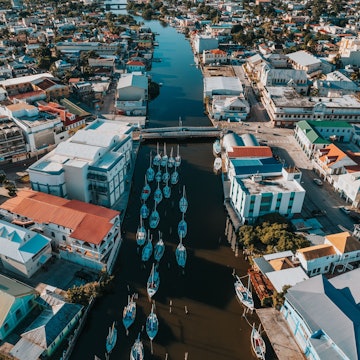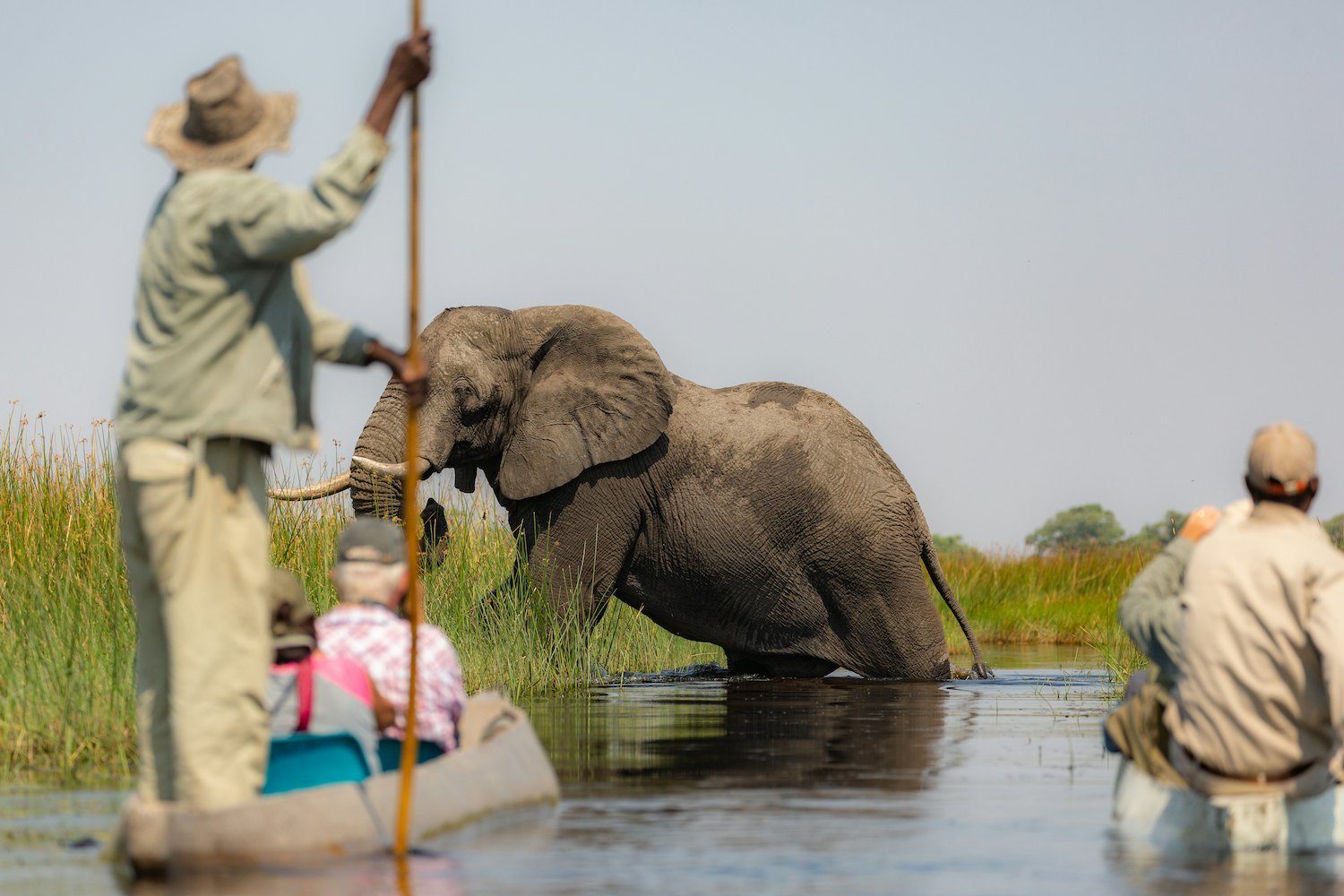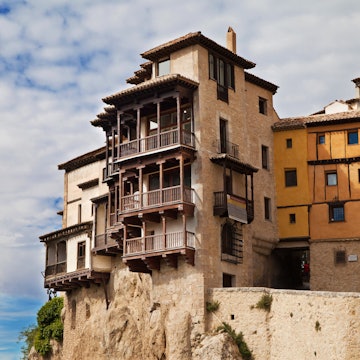

Head to Pebbles Beach at sunset in Barbados. Kyle Babb for Lonely Planet
Combining shoulder-season prices with decent weather in many parts of the world, May has a lot to offer travelers. So whether you’re seeking wildlife encounters, cultural happenings, an intrepid journey or a destination that won’t break the bank, there’ll be something in this month’s round-up sure to rouse your wanderlust.
Here are the best places to go in May, for any travel style.
1. Barbados
Best for surfing
Barbados is your grade-A tropical paradise, prime for beach lazing, sun-soaking and enjoying the sea breeze. But it’s also one of the best islands in the Caribbean for surfing, especially on its Atlantic-facing south and east coasts. Conditions are usually good and consistent from November right through to June; the advantage of May is that, while there might be a little more rain than in the preceding months, it’s still super sunny and prices are lower, too.
Top spots for catching waves include Freights Bay (good for beginners), South Point and Soup Bowl, a world-class wave near laid-back Bathsheba that has hosted international competitions. Brandons, a glorious beach near the capital Bridgetown, is also popular. Also of note, Rihanna is from Barbados and you can check out her childhood home among other great places to visit in Barbados.
Planning tip: To access multiple surf beaches, hire a car. The small east coast fishing community of Bathsheba is more rum bars and local guesthouses than glitzy resorts and provides a relaxed base.

2. Thessaloniki, Greece
Best for a European city break
Ancient Thessaloniki, founded in 315 BCE, feels young at heart. There’s a palpable buzz to Greece’s second city, and in May that buzz moves outside when locals – including a huge student population – start hanging out in Navarinou Square, sipping strong coffee and tsipouro (grape brandy) at pavement cafés, and filling the rooftop bars as they begin to open for the season. With average highs of 24°C (75°F), it’s even warm enough to pop to the beach: Blue Flag Epanomi is only 25km (15 miles) south, and the famed turquoise waters of the Halkidiki Peninsula are a 2–3hr bus journey away.
When you're done with the beach, take a dip into Thessaloniki’s neighborhoods. Egnatia, built on a Roman road, is the main thoroughfare; around it are Roman monuments (including the ruined palace and Arch of Galerius), interesting churches and stalls selling koulouri (pretzel-like sesame rings). The waterfront, home to the city’s iconic White Tower, is a wonderful place to stroll or cycle. It ends at the port – home to the Macedonian Museum of Contemporary Art – and Ladadika, the former bazaar district, packed with restaurants and late-night action. Ano Poli is the Upper Town, a messy, atmospheric tumble of old Ottoman alleys.

3. Great Smoky Mountains, USA
Best for fireflies
The Smokies are truly on fire this month. This spectacular subrange of the Appalachian chain, on the border of North Carolina and Tennessee, is home to huge numbers of Photinus carolinus (synchronous fireflies) and May to June is typically when they put on their magical en-masse mating display: a forest full of males flashing in unison.
If you want to see this amazing phenomenon read the how-to from our expert, John Garry. This natural wonder is the icing on the cake of a springtime road trip through the mountains. The USA’s most popular national park is mercifully quieter at this time of year. Take scenic drives via its misty ridges, hike wildflower-flush trails, look out for the diverse wildlife – from groundhogs and chipmunks to salamanders and black bears – and soak up the strong Southern Appalachian culture: log cabins, mills and churches built by early settlers have been preserved here.
Planning tip: Due to high demand, seeing the fireflies at the national park’s Elkmont viewing area is managed by a lottery process. The ballot usually opens in late April.

4. Newfoundland, Canada
Best for iceberg-watching
They call the waters off Newfoundland and Labrador “Iceberg Alley.” In spring, great hunks of Arctic ice – mostly cast-offs from the glaciers of western Greenland – float down the Atlantic coast past Canada’s easternmost province. They usually arrive in April and May, peaking from mid-May to June. You can stand onshore and watch these white titans drift by or board a boat for a closer look. Good spots include St Anthony, Twillingate, Bonavista and St John’s/Cape Spear. Seabirds also start to show up in May, while by the end of the month, the first whales appear.

5. Uzbekistan
Best for a train journey
Caravansaries. The Silk Road. Spices. There’s something undeniably romantic about travel here, which has been the cultural heart of Central Asia for millennia. This is especially true of Uzbekistan’s trio of historic cities – Samarkand, Bukhara and Khiva – which glitter with mosaic-tiled mausoleums, mosques and medressas (religious schools) that still speak of ancient times. It’s also easier than ever to travel between cities in Uzbekistan, with high-speed trains that make getting around a breeze. Indeed, May is the perfect month to visit. Temperatures in the mid-20s°C (mid-70s°F) make for comfortable sightseeing, while tulips and apricot blossoms enliven the landscapes.

6. Norway
Best for exploring on the water
Hurtigruten ferries ply Norway’s 2400 km (1491 miles) west coast, from southerly Bergen to Arctic Kirkenes year-round. They are a lifeline for people living along this wild, fjord-serrated seaboard – so they must depart, whatever the weather. That said, May to June is a good time to visit. The weather is generally mild and days are extraordinarily long. By mid-May, the sun doesn’t set at all in far-north Tromsø, which means you can watch the jaw-dropping scenery glide by all night long.
Better weather and more light make it easier to hop off for activities, too. There are 34 ports of call; disembark to fish in the Lofoten Islands, meet Sami people at North Cape or hike near Geirangerfjord. Note that May is a month of festivals in pretty Bergen, so allow extra time here before you sail. You can even visit on a budget using our top tips.

7. Belize
Best for ancient ruins
Diminutive Belize packs a big punch. Only about 180 miles (290km) long, and with English as the official language, it’s a cinch to hop between its ancient Maya ruins, wildlife-rich tropical forests, living Maya communities and the cays and atolls of the world’s second-longest barrier reef, offering gorgeous beaches and fabulous snorkeling. You can see a lot of the country on a road trip with no problem.
May’s a sweet spot for weather and wildlife, when the sun shines, whale sharks cruise near Gladden Spit, and nesting green, hawksbill and loggerhead turtles lumber onto beaches on Glover’s Reef and Ambergris Caye. In the north, explore relatively little-visited temples at jungle-set sites such as Xunantunich and Lamanai; today, the descendants of the ancient Maya who built these monuments live in villages around Toledo, where they welcome visitors to immersive homestays.
Planning tip: From Belize City, head west to explore Maya sites such as Lamanai and Xunantunich, veer south to spot wildlife in Cockscomb Basin Forest Reserve and meet the modern Maya around Toledo, then snorkel, dive and chill on Glover’s Reef and Ambergris Caye.

8. Memphis, USA
Best for music
Memphis is less like a city, and more like a religion. People come to pay homage in the spiritual home of the blues, rock’n’roll, Elvis Presley and Memphis-style barbecue. In short, it’s a feast for ears, bellies and souls. Spring sees the Tennessee city at its tastiest: good weather, before summer’s sticky, buggy heat; plus the Memphis in May festival, incorporating the Beale Street Music Festival, the World Championship Barbecue Cooking Contest, the Great American River Run and more. There are sites aplenty: take a tour of legendary Sun Studio; visit the National Civil Rights Museum (partially housed inside the Lorraine Motel, where Martin Luther King Jr was shot in 1968); and, of course, make a pilgrimage to Graceland, Elvis’ uber-kitsch home. Wander through all of the great neighborhoods in Memphis to really get under the skin of this historical city.
Planning tip: Graceland is 9 miles south of downtown Memphis on US 51 (aka Elvis Presley Blvd). A free shuttle bus runs there from Sun Studio.

9. Murcia, Spain
Why now? To eat really well.
There isn’t really a bad time to visit Spain’s Costa Cálida (the “Warm Coast”). But balmy, sunny May, with average highs of around 25°C (77°F), is a good time to get a real flavor of the place before summer crowds arrive. And the flavors are exceptional: surrounded by hills, vineyards, olive groves, fertile gardens and rich seas, the region is renowned for its quality meats, fruit, vegetables and fish. Regional specialities to look out for include caldero del mar menor, a cauldron-cooked rice stew traditionally made by fishermen from catch too small to sell; and paparajotes, battered and fried lemon leaves. Tapas trails can be followed in both the regional capital Murcia and the historic port of Cartagena.
Planning tip: Spend a week grazing around Murcia and Cartagena, hiking and biking the forest trails in Sierra Espuña Regional Park, and relaxing on the Costa Cálida’s long, sandy beaches.

10. Bali, Indonesia
Best for food and island life
Bali in May? Delicious. Dry, hot and sunny days, peak season crowds yet to descend and – as always – a relaxed vibe. Nowhere is the latter more true than in Ubud, the artsy, hippie highlands town with a good line of galleries and museums, ancient temples and a thriving food scene. Ubud, which is surrounded by lush forests, paddy fields and leafy plantations, has several world-class restaurants and fancy cocktail lounges as well as low-key food stalls and cafes serving Balinese specialties – gado gado salad, satay, injin porridge, babi guling (suckling pig) and more. It’s a great place to take a cooking course.

11. Chobe and the Okavango, Botswana
Best for wildlife
May means all change in northern Botswana. It’s the start of the dry, cool season when the landscape is still verdant from the previous months’ rains but the skies are increasingly cloud-free. Also, the wildlife – looking fit and healthy, thanks to all the water – gradually becomes more active as temperatures drop. Prices and numbers of tourists are lower than the coming peak months too, adding extra attraction to mokoro (traditional canoe) trips along the fingery tributaries of the Okavango Delta and game drives in Chobe National Park, where wildlife, including huge herds of elephants, is starting to gather at the riverbanks.
Planning tip: Chobe and the Okavango make a good combination. Allow at least ten days to make the most of both, taking boat, canoe and 4WD safaris, learning to fish and visiting local villages. Consider staying on a private concession in the Okavango, where more activities (including night drives and walking safaris) will be permitted.

12. May’s dream trip: Embrace the spirituality of Uluru in Australia
There’s nowhere else on Earth quite like Uluru. It’s almost impossible to look away from the vast, sandstone monolith, rising as it does from the red sands of the desert like an apparition, riven with crevices and animated by ancient stories from its Traditional Custodians, the Anangu. At sunrise and sunset Uluru appears almost luminous. After a rare desert rainstorm, rivulets seemingly of molten silver stream down its many faces. And in the long daylight hours, it glowers out across the desert over which it presides, moody and magnificent.
Uluru is part of a national park, which it shares with Kata Tjuta, a series of nearly 40 granite domes in weirdly wonderful forms that dominate the horizon for miles in every direction. Together, Uluru and Kata Tjuta carry deep spiritual significance; learn more on walks led by Anangu guides or at the Uluru-Kata Tjuta Cultural Centre. And together these two geological marvels form the compelling centerpiece of Australia’s storied Red Centre.
Looking to plan further ahead? Here are the best places to travel every month of the year.














